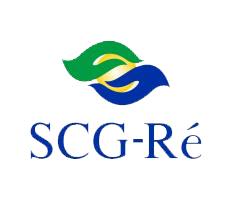Regulation and Reinsurance: Navigating a Complex Landscape
The world of reinsurance thrives on risk mitigation, but for the industry itself, a different kind of risk looms large: regulatory complexity. Solvency II, IFRS 17, and a constellation of other regulations cast a long shadow, influencing reinsurance practices and pushing the industry to evolve. How, then, can reinsurers navigate this labyrinthine landscape and emerge stronger?
Solvency II: A Pillar of Capital Adequacy:
Europe’s Solvency II framework stands as a landmark, demanding robust capital requirements and risk management practices. For reinsurers, this translates to heightened focus on reserving, capital allocation, and internal models. While initially viewed as a burden, Solvency II has fostered stability and transparency, attracting long-term capital and boosting investor confidence.
IFRS 17: A New Lens on Reporting:
The new accounting standard, IFRS 17, mandates a fundamental shift in how insurers and reinsurers report contracts. It replaces previous standards with a single principles-based model, aiming for greater comparability and consistency. For reinsurers, this means increased data demands, complex calculations, and potential changes in product designs. While the transition poses challenges, IFRS 17 ultimately enhances market transparency and improves understanding of risk profiles.
Beyond the Big Two:
Solvency II and IFRS 17 are just the tip of the iceberg. A plethora of other regulations, from national risk-adjusted capital frameworks to international initiatives like Own Risk and Solvency Assessment (ORSA), add further layers of complexity. Reinsurers must stay abreast of this evolving landscape, adapting their internal frameworks and processes to comply with diverse regulatory regimes.
Navigating the Maze:
So, how can reinsurers navigate this intricate regulatory terrain? Here are some key strategies:
- Embrace Technology: Data analytics and automation tools can streamline Solvency II and IFRS 17 compliance, reducing reporting burdens and improving data accuracy.
- Invest in Expertise: Building a team with deep regulatory knowledge and experience is crucial to interpret and implement complex regulations effectively.
- Collaborate with Regulators: Open communication and proactive engagement with regulators can foster a spirit of cooperation and ensure smooth implementation of new rules.
- Agility and Adaptability: Continuously monitor the regulatory landscape and adapt business models and strategies to stay ahead of the curve.
A Catalyst for Transformation:
While regulatory complexity presents challenges, it also acts as a catalyst for positive change. The industry is becoming more transparent, capital-efficient, and responsive to risk. Reinsurers that embrace the regulatory environment and leverage it to their advantage will not only survive but thrive, emerging as stronger partners in mitigating risk and building a more resilient financial ecosystem.













